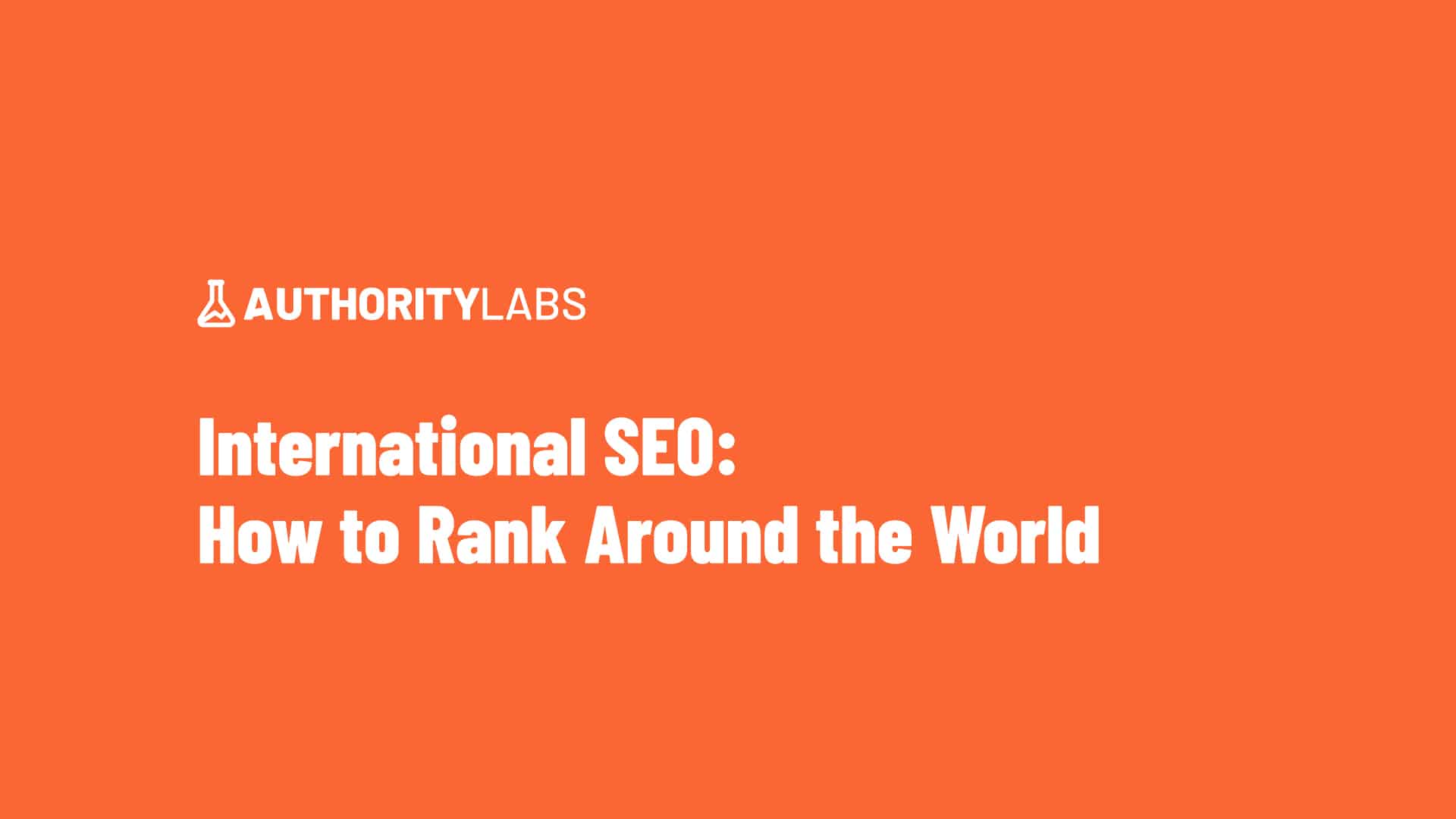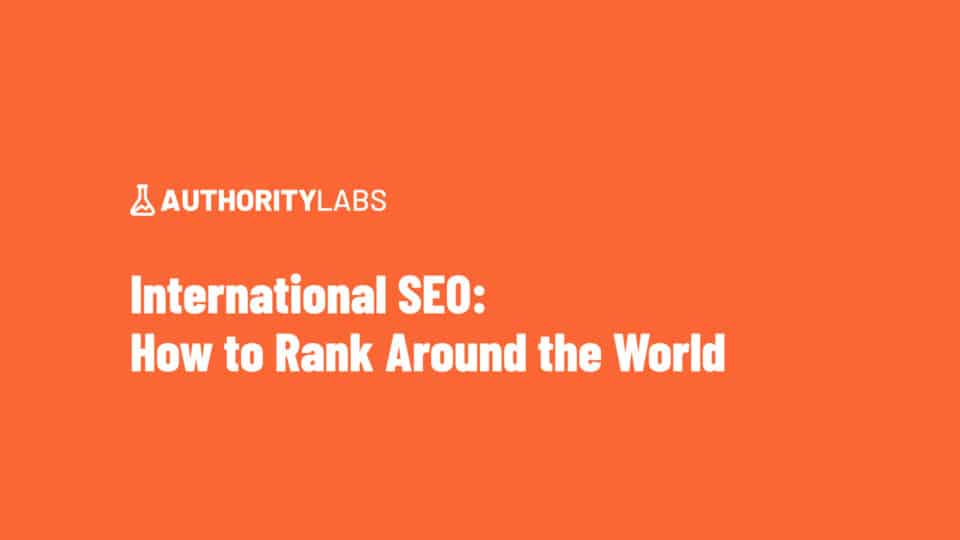Ranking a website with a single location is one thing, but having multiple sites with multiple locations around the world is a whole other ball game. Obstacles like GDPR, multiple languages, proper site structure, and country variations can add difficulty for even the most technical SEOs.
Some SEOs will argue that international SEO is among the most challenging, and we don’t necessarily disagree. To help crack the code on ranking internationally, we had a chat with international SEO experts Aleyda Solis, Michael Bonfils, and Gabriella Sannino to discover how they rank their clients around the globe.
We also reached out to a few more experts to learn how agencies focus on international SEO issues like site structure fundamentals, content strategies, and developing trust from multiple regions.
Read below to see what Bastian Grimm, Gianluca Fiorelli, and Callum Scott had to share about their first-hand experience as international SEO’s.
In terms of site structure, how should a site be best set up to rank internationally? What are some of the fundamentals the site needs to have?
Bastian Grimm
From a domain-level perspective – and if it’s a greenfield opportunity – I am very much in favour of running gTLD using language sub-folders (or country, or both, depending on the scale). This includes respective geotargeting settings in Googles Search Console. The respective ccTLDs (e.g. domain.de > domain.com/de) would then redirect to the language folder to catch type-ins, etc.
Obviously, hreflang is a must-have for proper geotargeting as well (and please go for XML sitemap implementation whenever you can, it’s so much easier to maintain – and you’re not bloating your HTML).
Gianluca Fiorelli
I don’t want it to sound like a joke, but the truth is that it depends on many circumstances. For example, if a brand wants to enter a new market also with a physical presence in it (i.e. stores), then it may be appropriate to start immediately with a ccTLD.
In other cases, for example, if we find an ecommerce with a very large product database and a very complex technology stack, it may be more effective to start with a subdomain.
However, in line of principle – and what I advise – the ideal is to start with a strategy based on subfolders (eg .com / es /, .com / it / …), to provide some force from the beginning the new versions thanks to the flow of link equity between the existing version (or versions) and the new ones.
Anyway, over time and when the version we have launched to attack a new market is sufficiently established in the search results, it is important in many cases to ask if it is the case to move from the subfolder strategy to ccTLDs, which are ideal for what is defined as transcreation, that is, the deep location of the marketing (and commercial) actions of a brand towards a specific market. Once decided what international SEO strategy to follow, then you will start planning the technicalities of International SEO (i.e.: hreflang).
Callum Scott
Personally, I don’t have a preference so long as the implementation is good. A lot of what we do is work with clients looking for a diagnosis after a drop in rankings, or if a site is not performing as expected. For sites trying to rank internationally, and not doing as well as they expected, we will get asked broad questions from their development team like “Should we buy ccTLDs for every region and move everything over?!”.
Well, that is a pretty big, and expensive decision to make! Yes, there is some evidence to suggest that ccTLDs give a ‘stronger’ signal to the engine… but more often than not when a site isn’t doing well we find that the issue is with their implementation – and more often than not it is with ther hreflang!
So whether you are using a ccTLD for each country, subdirectories, subfolders, whatever – first and foremost make sure that you are setup correctly!
How do you assess what a site needs based on the country or location it’s targeting?
Bastian Grimm
I think the key element to running successful, multi-national campaigns is a profound understanding of a market and its culture.
At Peak Ace, we have never believed in pure translation or in working with freelance resources for international projects. No matter how hard you work, the quality always ends up disappointing. So, from early on, we started hiring native speaking staff and relocating them to Berlin; this seems to work pretty well for us. So, get someone who’s actually at home in the market you’re trying to serve and let them do their own research – then overlay and synchronise with other markets only at the very end.
Gianluca Fiorelli
It is best to sit next to those who have done market research. Understanding from the beginning the peculiarities of the market that you want to attack with a dedicated version of our website comes first.
Finally, it is not very different from when a company wants to launch a new website dedicated to a new product line in its own main market, which is why qualitative and quantitative studies of the market are carried out and buyer people are designed. The same should be done in the case of creating the version of a website to open to a foreign market.
Thanks to this previous work we can really begin to locate the new website so that it responds in the most efficient way (and not only in terms of SEO) to the needs of these new users.For example, a wine website may highlight some products or others depending on the market. In Italy, for example, they will be Italian wines such as the Spumante; in France, the Champagne will be more evident and in Spain, the Cava.
What are some of your favorite content strategies to help rank a site internationally?
Bastian Grimm
Once you’ve done your homework (i.e., finished your market research, built a keyword strategy, mapped searchers’ intent and synchronised with other markets), everything comes down to proper planning and execution. For complex content that is also supposed to drive engagement (e.g. social shares or link acquisitions), we often prefer data-driven pieces.
There are various benefits, such as relatively low localisation costs (data research normally only needs to be done once, development efforts are low – it’s just swapping data sources, etc). Be warned that your outreach strategies and efforts also need to be localised properly.
Gianluca Fiorelli
I really like to assess the content strategy over the base of well-executed keyword & topical research, which includes also a very detailed analysis of the SERPs features presented by Google. When it comes to strategy, we can limit ourselves to very broad terms like, for instance in a tourist website, the name of the travel destinations.
In a case like this, I would ask myself some questions:
– “From this list of destinations, which are equally popular in the markets that my target website?”. For example, France is a very popular destination regardless of the market we are targeting, so a guide to the most beautiful castles in France could be content that we can create and publish at the same time for all versions.
– “This same list of destinations which are popular in a market and less in another?”. For example, Formentera (one of the Balearic Islands of Spain) is very popular among the Italians, but much less among the Germans or the British, therefore a guide on the best beaches of Formentera should be prioritized for the Italian version of our website and then, with a lower priority level, we can create their German and English versions.
Then, I would go to see – always in the example of the Formentera guide – what questions (People Also Ask), what related searches (People Also Search and Related Searches also in Images Search) and what entities (Google Images tags) Google suggests us on google.it, google.co.uk and google.de because they are always different.
And finally, what format? We can always understand this by observing what features Google presents us (block of images? Video carousel?) And analyzing the pages that Google is already positioning in different first pages of its regional versions.
Callum Scott
“Write for the people, man!” – it’s a played out piece of advice, but it does work! A lot of sites will just translate their content into the target countries local language (often poorly) and try ranking for the same keywords as they were going for in the US, and think the same content strategy will work in Germany, or Japan!
If you are looking to create new or repurpose some of your content into a new language for a different region, then making sure you understand the nuance and local culture of that country. There is a reason we charge significantly more to work on foreign language sites, it isn’t necessarily the time it takes to translate the content, but we have to learn a whole new economic ecosystem for the target audience. That takes time and effort, but it can really pay off!
One of my favourite international SEO anecdotes about not doing this, is about an SEO trying to rank for, I think “Computer Reviews” or something in Denmark. The translator told them Danish for computers was “Datamat”, which classically it is…. But no one actually says “datamat”, they just say computer! I think the site ended up ranking well for “datamat” queries, but no traffic came from it since no one was actually searching for it.
How do you develop domain authority and trust when you’re trying to reach several different locations?
Bastian Grimm
Coming back to my two points from earlier (one single gTLD and a proper hreflang setup on top of it), this will really help you since you don’t necessarily have to build trust “per domain” but instead consolidate all inbound equity on your gTLD. Those inbound links – even when pointing to your language sub-folders – will still pass on some of their trust to the root level of your domain.
Combine that with proper internal linking (yes, it’s absolutely fine to use named anchor texts for internal links) and you’re OK to focus your trust-building efforts on your key markets.
Gianluca Fiorelli
The type of content strategy that I have described above may also be the basis of a content-based link building strategy. For example, the guide to the most beautiful castles in France could be the basis for a global link building campaign, so we can target media and other websites around the world at the same time. However, the guide on the best beaches of Formentera would be a content campaign that targets only Italy.
Another example could be to create content based on our own data such as “In which foreign countries have people spent some time volunteering?” The report would be generic enough to be able to outreach globally with the big media, but with enough (and relevant) data at the country level to target local and even regional media. In both situations, you should always count on the collaboration of local link builders because the link building also varies from country to country.
For example, in the USA and UK, actions of digital PR for link building have quite good reception among journalists. On the contrary, in countries like Italy, its effects are much less. Therefore, having local link builders (as well as local SEOs in the case of keyword research and localization) is always something that must be taken into account when establishing an international SEO budget.
And this is one of the most common mistakes: believing that simply by replicating and translating your “mother” website, with a relatively low cost, you can conquer a foreign market.
The Contributors

Bastian Grimm
CEO & Co-Founder, Peak Ace AG
Bastian Grimm is the CEO & Co-Founder of Peak Ace and a renowned expert in large-scale, international SEO – managing sites of almost any size in highly competitive industries. Always eager to expand his knowledge, with more than 20 years’ experience in online marketing, technical and global SEO, Bastian currently oversees Peak Ace’s search engine optimisation as well as content marketing initiatives.

Callum Scott
Senior SEO Analyst at Marie Haynes Consulting
He specialises in diagnosing major organic traffic drops and consults with site owners to develop strategies for recovery and future development. He contributes to industry publications and is starting to speak publicly at conferences such as DMSS.
Follow Callum on Twitter: @mrcallumscott

Gianluca Florelli
Gianluca works in the Search Marketing industry since 2004, and he is recognized amongst the SEO community as an expert in Strategic and International SEO.In his portfolio, Gianluca can count with the collaboration with clients like Glassdoor, Meredith Inc., GoOverseas, Magoosh, Iberostar, Propiedades.com, Idealista and many others business companies around the world.Very active in the community, especially on Twitter (https://twitter.com/gfiorelli1), Gianluca is also the founder of the digital marketing conference The Inbounder, held in Spain every 2 years.

